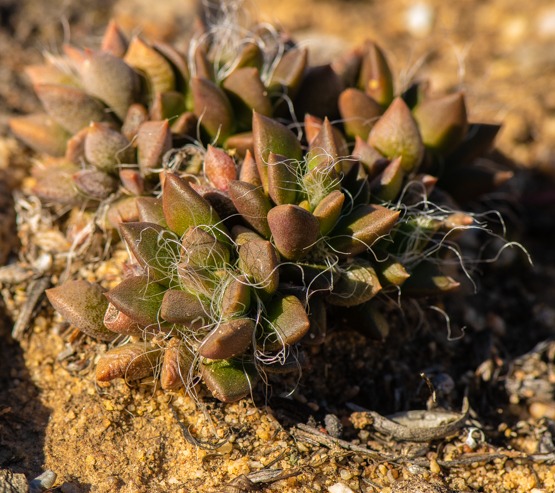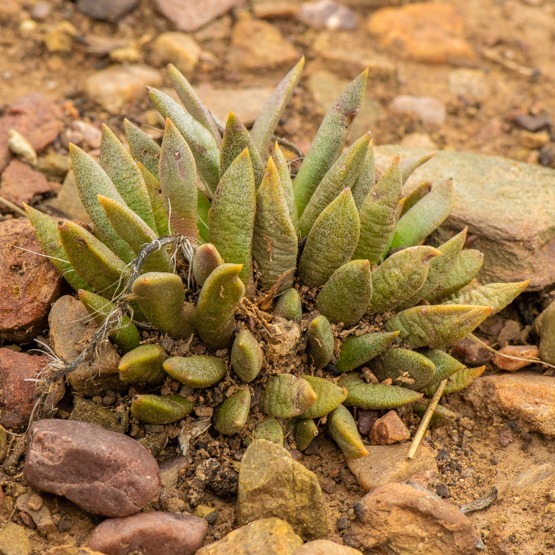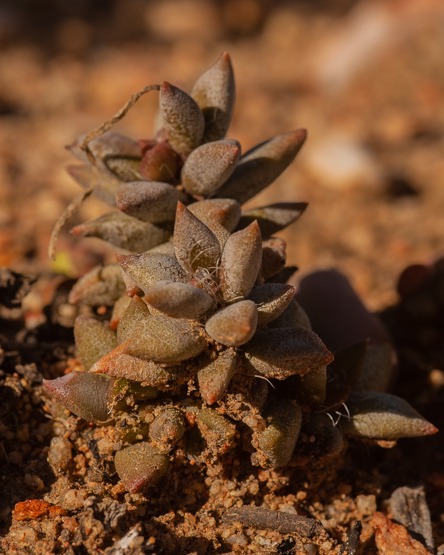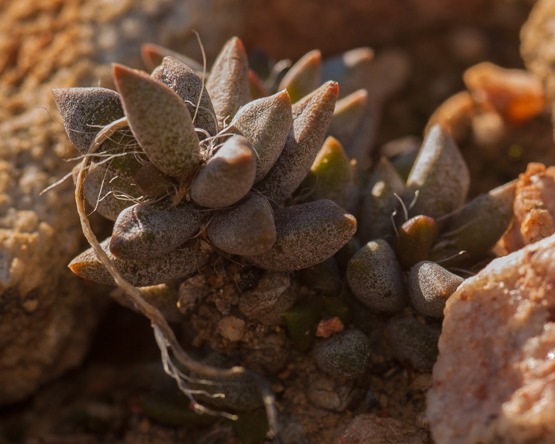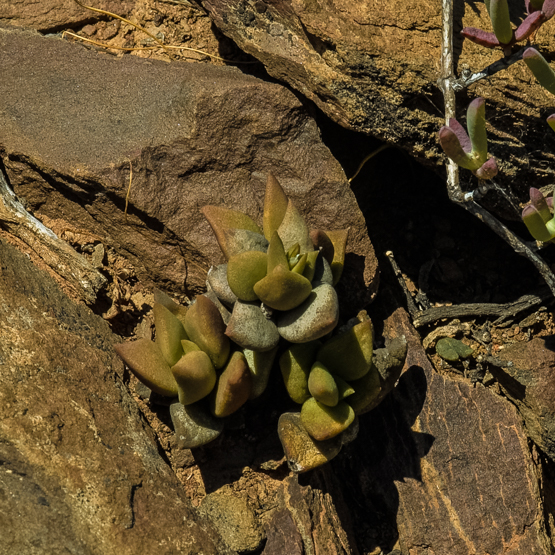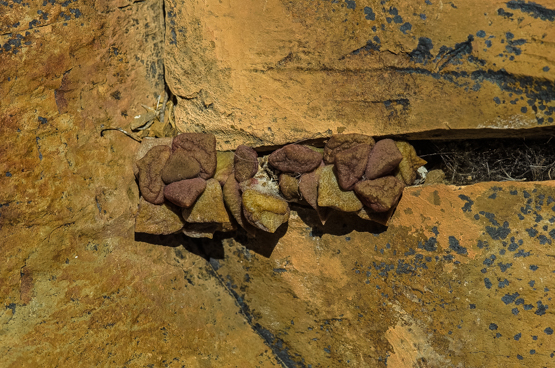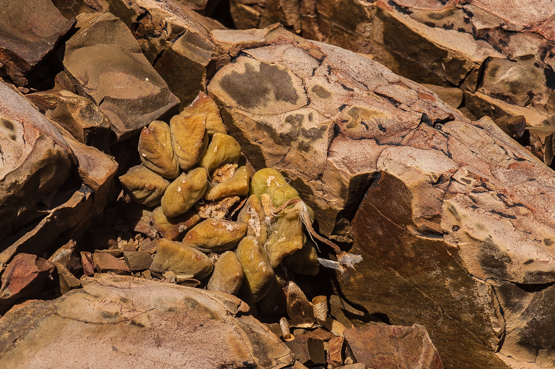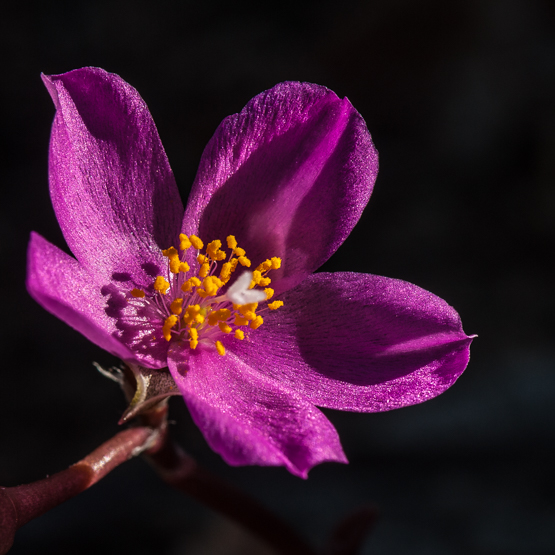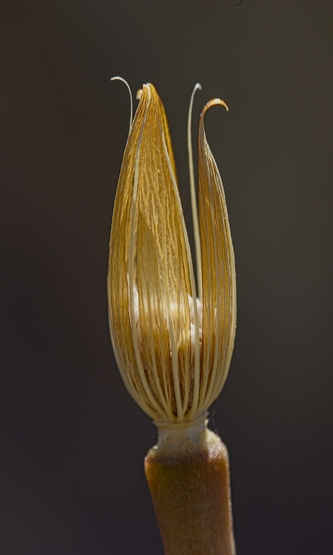Common names: boesmansuring, hasiekos.
This clump-forming species is similar to A. telephiastrum, but up to 10 cm tall and thereby the largest member of the genus.
Its leaves are lance-shaped*, to 4 cm long and to 2 cm wide ( wider than thick), rounded below but almost flat above and ending in a minute spiny tip; they are blue-green at the beginning of the growing season, but become wrinkled and brown at flowering time. The white hairs in the leaf axils are often longer than the leaves.
The inflorescence is up to 25 cm tall, with 1 – 4 pink or white flowers, which are to 3 cm in diameter; the petals are almost as wide as long, with a pointed tip. Flowering time is October to December.
The plants are found on rocky flats or slopes from the Richtersveld to the western Karoo, Little Karoo and Langkloof. Anacampserotaceae
* a shape which is broadest at about a third from the base and gradually gets narrower till it ends in an acute tip.

